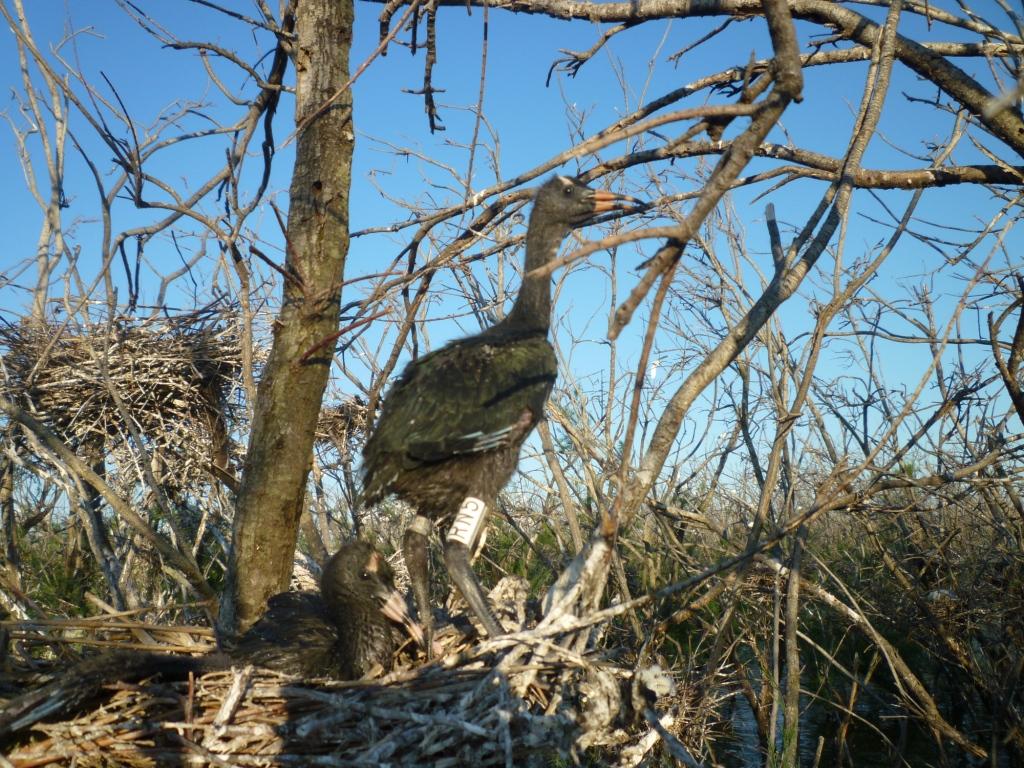The Glossy ibis had not been observed nesting in the Camargue since 1996; however, in June 2006, 14 breeding pairs were discovered at the Scamandre Centre. Since then, the Camargue population has continued to increase, rising from 14 pairs in 2006 to 196 in 2009. This upward trend was prolonged in 2010, and today there are 332 pairs in the Scamandre colony.
 A ringing programme was put into place in 2006 by the Tour du Valat in collaboration with the Scamandre Centre (city of Vauvert in the Gard Department, France). Last May, our professional ringers, who were helped by the Friends of the Vigueirat Marsh, the LPO, the Scamandre Centre, and the Provence Centre for the Study of Ecosystems (CEEP), were able to ring 308 chicks. A plastic ring was placed around these birds’ tibia with a code that can be read remotely, and a metal ring from the French National Museum of Natural History was placed around their tarsus. Since 2006, readings of the rings have enabled us to observe dynamic nature of the Glossy ibis population and in particular to show that at least some of the individuals are coming from the Spanish colonies in the Guadalquivir and Ebre deltas.
A ringing programme was put into place in 2006 by the Tour du Valat in collaboration with the Scamandre Centre (city of Vauvert in the Gard Department, France). Last May, our professional ringers, who were helped by the Friends of the Vigueirat Marsh, the LPO, the Scamandre Centre, and the Provence Centre for the Study of Ecosystems (CEEP), were able to ring 308 chicks. A plastic ring was placed around these birds’ tibia with a code that can be read remotely, and a metal ring from the French National Museum of Natural History was placed around their tarsus. Since 2006, readings of the rings have enabled us to observe dynamic nature of the Glossy ibis population and in particular to show that at least some of the individuals are coming from the Spanish colonies in the Guadalquivir and Ebre deltas.
This Ibis colony is living in an exceptional larger colony of tree-nesting herons. First, in terms of the diversity of species in it: in addition to Glossy ibises, there are Squacco herons, little egrets, great egrets, grey herons, cattle egrets, and black-crowned night herons! It is also exceptional in terms of the number of pairs: nearly 3,500 in 2010. One of the largest colony of tree-nesting herons in Europe !
This population of nesting Glossy ibises was discovered within the framework of the Tour du Valat’s “Long-term monitoring of nesting heron populations in the Camargue” programme.
We invite you to discover this remarkable colony on one of the nature path walks proposed bScamandre Centre.